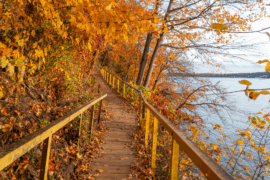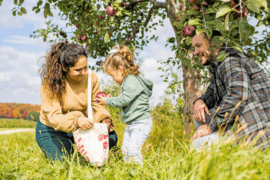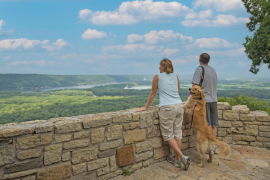The prevailing call of the wild, when autumn arrives in Wisconsin, is the mournful honking of Canada geese that blacken the fields of Horicon Marsh, which is one hour northwest of Milwaukee.
The swampy oasis for birds migrating south is vitally important, especially during this time of year. What we have are vast wetlands that are deemed of great value internationally, and the best time to see the widest assortment of birds is mid September through October.
The nation’s largest cattail marsh — about 14 miles long and up to five miles wide — also is among our largest freshwater marshes. Within these 33,000 acres are large nesting areas for redhead ducks and great blue herons. It didn’t happen by accident. Refuge work began in 1941 because of the vulnerable ducks; now thousands nest here every year.
Bird watchers have spotted at least 300 types of birds — egrets and owls to cormorants and bald eagles — that are protected and nourished by Horicon’s complex ecosystem. Shorebirds and songbirds make their way here. So do pelicans, broad-winged hawks and kingfishers.
Occasionally, the feathery passersby are endangered or threatened species. Horicon Marsh Bird Club and others count all that they see in a designated area from dawn to dusk during the Big Sit, on the second Saturday of October. Visitors are welcome to help.
The marsh’s northern two-thirds (22,000 acres) are federally protected and only open during daylight. The remaining 11,000 acres is Horicon Marsh State Wildlife Area. Admission is free.
Some parts are not accessible to the public because no floating vessels (boats, kayaks) or motorized vehicles (ATVs, snowmobiles) are allowed. A few hiking trails and observation decks are reachable by foot all year; easy-to-find maps mark the way.
Skirt the perimeter of the marsh by car, following Horicon Marsh Parkway, a 36-mile loop in Dodge and Fond du Lac counties. Visit Horicon Marsh International Education Center, where lectures and exhibits often are designed to interest families.
Stay on hiking trails (the Egret Trail Floating Boardwalk is especially popular) unless at Bud Cook Hiking Area, where off-trail exploring is fine. For eager and serious photographers, a blind at the end of Old Marsh Road can be reserved.
Up-close views are the best, and that requires time on the water to find wellcamouflaged wildlife in feathered and furry forms. You can bring or rent a canoe or kayak, but the best way to get acquainted is through Horicon Marsh Boat Tours, 48-person pontoon boats with captains who understand the area’s rhythms and nuances.
Owner Marc Zuelsdorf’s first trip into these wetlands happened during childhood, while fishing with his father 50 years ago. If he’s the tour guide, expect nearly nonstop narration about nature’s subtleties. You may see clusters of cormorants, beaver lodges, swimming woodchucks or dive-bombing predators in search of fish for supper.
The tens of thousands of Canada geese are what add dramatic effect to Horicon during autumn, but it is not unusual to spot dozens of other birds during these excursions, made available from May to late October.
What you see will depend on time of day, time of year, type of weather and mood of wildlife. More often than not, species are identified by what is heard, not seen, and some melodic tweets and twitters will remain a mystery.
This article originally appeared in the 2014 fall/winter issue of Experience Wisconsin magazine. The contents of this article were checked for accuracy when it was published; however, it’s possible some of the information has changed. We recommend you call first if you have specific questions for the destinations, attractions or restaurants mentioned in this article.
No portion of this article or magazine may be reproduced without prior written permission by the publisher.






Comments are closed.